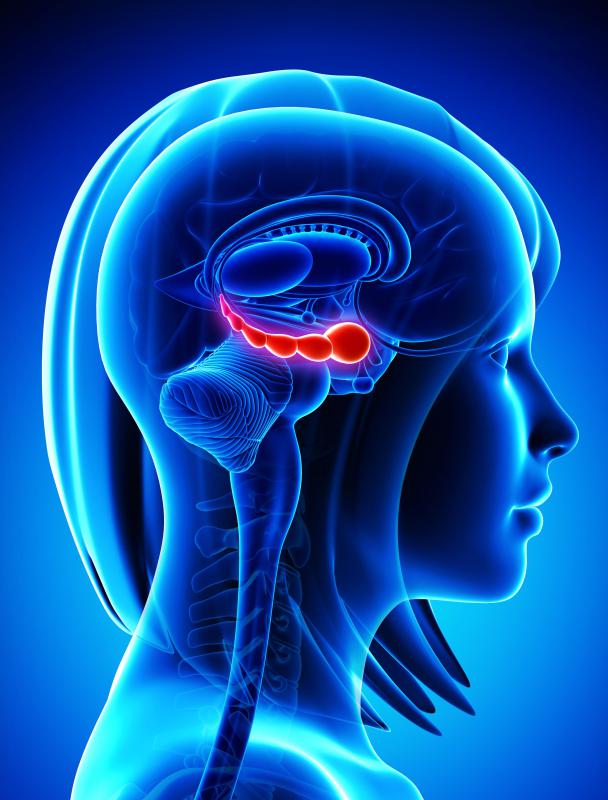At WiseGEEK, we're committed to delivering accurate, trustworthy information. Our expert-authored content is rigorously fact-checked and sourced from credible authorities. Discover how we uphold the highest standards in providing you with reliable knowledge.
What Is the Medial Temporal Lobe?
The medial temporal lobe is located deep within the cortex of the brain. This portion of the cerebral cortex assists in the formation of several types of memory. The hippocampus is a part of this central section of the brain, which is involved in forming long-term memories, as well as orienting oneself in space.
Studies performed on the medial temporal lobe show that it assists in encoding and recalling memories, whether or not memorization is intentional. Functional magnetic resonance imaging (fMRI) studies investigated this lobe's activation when material was memorized and retrieved. These studies found that the same structures in the lobe were activated when material was purposely memorized and recalled, and when information presented incidentally was recalled. A number of other studies have shown that larger degrees of activity within this lobe are related to better performance on memorization tasks.

The main types of memory that the medial temporal lobe regulates are episodic and declarative memory. Episodic memory refers to the knowledge of the events in one's life. Declarative memory is the knowledge of facts. When this lobe is damaged, the victim may have trouble remembering details of his or her life, or any facts memorized before the injury occurred. He or she may also have difficulties encoding new information after the injury.
Although many structures within the medial temporal lobe appear to be essential to memory formation and retrieval, the hippocampus has been studied the most extensively. This part of the brain is a structure heavily involved in transferring memories into long-term storage. Removal of the hippocampus can result in a complete inability to memorize new facts, or events that happened after removal.
The hippocampus also contains special neurons called place cells. These cells show activity in relation to where an individual is located within an area. They may also respond to direction of movement, or the orientation of the body. Place cells are involved in the ability to navigate through areas successfully. Memory loss caused by damage to this area often includes frequently getting lost, which seems to show that these cells are involved in spatial memory.
Diseases like Alzheimer's, which affect the hippocampus first, often cause amnesia. When the hippocampus is damaged, other areas of the medial temporal lobe will attempt to compensate. Imaging studies using fMRI show that as Alzheimer's becomes more advanced, the rest of this lobe shows greater activity during memorization and recall tasks. The rest of the medial temporal lobe cannot fully replace the function of this part of the brain, but it does mitigate some of the damage.
AS FEATURED ON:
AS FEATURED ON:











Discuss this Article
Post your comments